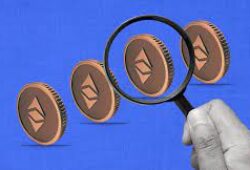Startups, here’s how you can make hardware without ruining the planet
 Posted On
Posted On
Someone starts a hardware company with the express goal of destroying as much of the planet as possible.
Walking through the launch hall at CES.
However, I noticed that with a few notable exceptions painfully little attention was paid to material selection, reparability, ease of disassembly, and end-of-life considerations.
Resources
It’s really embarrassing – but as someone who has run a hardware startup, I know it can be hard to prioritize when you have limited time and resources.
But if you can’t make planet-friendly decisions as a startup founder, when does the buck literally stop with you, when can you?
In an effort to find out how you can create greener hardware, we spoke with Lauryn Menard, a professor at the California College of the Arts, where she teaches the future of biodesign.
She is also an advisor to Women in Design SF and co-founder and creative director of PROWL Studio.
An Oakland, California-based design and future of materials consultancy focused on sustainable solutions.
“As a startup, you have a choice. The thing is, we live in such a capitalistic society and a lot of decisions are made based on time and money,” explained Menard.
Startups want to think about sustainability, but they move at breakneck speed and try to get the product to market as soon as possible.
Startups have to hit a target price and all that good stuff.
But there are some big things moving in the market.
Consumer
Consumer demands are shifting and climate commitments, circulation strategies and environmental issues are bubbling to the surface.
It’s hard to say whether enough customers are making purchasing decisions based on a company’s green credentials to meaningfully move the needle.
Product development cycles can take years, and who knows what the environment will look like before your product hits the market?
It may make sense for some companies to take risks, but other founders are starting to think differently about how products are made.
“If a startup is run entirely by engineers, it can be problematic: Engineers tend to worry about making sure they get to the finish line.
They put all their energy into making something work, and they probably gravitate toward materials, manufacturing methods, and manufacturing processes that they already know,” explained Menard.
“What we’ve seen [be] really helpful is working with a design studio that specializes in more sustainable ways of thinking and healthier materials.
Or a partnership with someone like a materials library so they’ve already started thinking about the functionality of the materials by the time they’re prototyping.
Just like it takes a really long time to get an MVP product that works and looks the way you want, sometimes it takes a long time to put a new material into an existing manufacturing process.”
One of the big challenges in developing more sustainable products is that we often replace plastic with something else.
The problem is that plastics are already deeply embedded in work processes. Product designers love how predictable, easy to design and repeatable plastic is.
There’s also no obvious one-for-one replacement for plastic.
Depending on the use case and the material properties you need, you may need to substitute wool, paper, wood, plant pulp, carbon fiber, seaweed, hemp, mycelium, lab-grown leather, or any number of other available materials.
Founders and product designers can do this to think more consciously about sustainability and product development.
Sources: Techcrunch | Canadatoday


